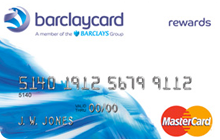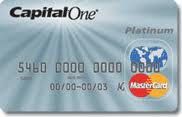- myFICO® Forums
- Types of Credit
- Credit Cards
- Re: In the lender's eyes... PIF or carry a balance...
- Subscribe to RSS Feed
- Mark Topic as New
- Mark Topic as Read
- Float this Topic for Current User
- Bookmark
- Subscribe
- Mute
- Printer Friendly Page
In the lender's eyes... PIF or carry a balance?
Is your credit card giving you the perks you want?
Browse credit cards from a variety of issuers to see if there's a better card for you.
- Mark as New
- Bookmark
- Subscribe
- Mute
- Subscribe to RSS Feed
- Permalink
- Report Inappropriate Content
Re: In the lender's eyes... PIF or carry a balance?

- Mark as New
- Bookmark
- Subscribe
- Mute
- Subscribe to RSS Feed
- Permalink
- Report Inappropriate Content
Re: In the lender's eyes... PIF or carry a balance?
We should clarify what we mean by PIF and carry a balance. Does "PIF" mean you pay what is due from the previous statement and your current balance ( which could be more ) on or before the due and you let a 0 balance post when a new statement is generated? Does "Carry a balance" means that after you've paid what is due and the current balance you potentially have other charges which would post as a new "due" balance when a new statement is generated? I've always been confused what MyFicoers considered the distinction. I always think you should pay what is considered "due" from the current statement regardless of what you leave as a balance for the next generated statement.
So like...
--Carry a balance
500 due + 3500 current balance
-3000 on/before due date
+300 new charge
+150 new charge
New statement
950 new balance due
--PIF
500 due + 3500 current balance
-4000 on/before due date
No new charges
New statement
0 balance due
I'm curious what others think. In this scenario I usually carry a balance on 1 to 2 cards and PIF all others.
- Mark as New
- Bookmark
- Subscribe
- Mute
- Subscribe to RSS Feed
- Permalink
- Report Inappropriate Content
Re: In the lender's eyes... PIF or carry a balance?
- Mark as New
- Bookmark
- Subscribe
- Mute
- Subscribe to RSS Feed
- Permalink
- Report Inappropriate Content
Re: In the lender's eyes... PIF or carry a balance?
@Layered wrote:even if your issuers report $0 balance every month, lenders can still see your payment history.
Oh, interesting, this I did not know. So a lender would see another lenders pay history, other than the monthly "OK" (or otherwised keyed in) in the legend?
Amex BCE $25000, Amex AP $20000, SFFCU Visa $15000 + LOC $5000, USAA Amex $6000, USAA MC $7000, Cap1 $9500, Freedom $12000, Slate $500, Barclays "RIP" SM $11500, USBank Cash+ $12500, Citi Diamond $11200, Citi Double Cash $12000, Care Credit $13500k.
My Credit Repair Journey
- Mark as New
- Bookmark
- Subscribe
- Mute
- Subscribe to RSS Feed
- Permalink
- Report Inappropriate Content
Re: In the lender's eyes... PIF or carry a balance?
@omskillet wrote:We should clarify what we mean by PIF and carry a balance. Does "PIF" mean you pay what is due from the previous statement and your current balance ( which could be more ) on or before the due and you let a 0 balance post when a new statement is generated? Does "Carry a balance" means that after you've paid what is due and the current balance you potentially have other charges which would post as a new "due" balance when a new statement is generated? I've always been confused what MyFicoers considered the distinction. I always think you should pay what is considered "due" from the current statement regardless of what you leave as a balance for the next generated statement.
So like...
--Carry a balance
500 due + 3500 current balance
-3000 on/before due date
+300 new charge
+150 new charge
New statement
950 new balance due
--PIF
500 due + 3500 current balance
-4000 on/before due date
No new charges
New statement
0 balance due
I'm curious what others think. In this scenario I usually carry a balance on 1 to 2 cards and PIF all others.
PIF to me means I PIF by the due date. I'm still too new and confused by the carrying a balance and this date and that date. ![]()
Amex BCE $25000, Amex AP $20000, SFFCU Visa $15000 + LOC $5000, USAA Amex $6000, USAA MC $7000, Cap1 $9500, Freedom $12000, Slate $500, Barclays "RIP" SM $11500, USBank Cash+ $12500, Citi Diamond $11200, Citi Double Cash $12000, Care Credit $13500k.
My Credit Repair Journey
- Mark as New
- Bookmark
- Subscribe
- Mute
- Subscribe to RSS Feed
- Permalink
- Report Inappropriate Content
Re: In the lender's eyes... PIF or carry a balance?
@Cdnewmanpac wrote:
The answer is that it depends on the lender. There isn't enough data on most issuers (local cu, regional bank, etc) to know. It is well established that amex's algorithms favor high spending and low to zero balance. There is some evidence that citi favors carrying balances. But to infer some sort of ideal individual behavior from the data available is impossible. Use your cards. Carry a balance when it makes sense (economically) to do so. Otherwise pay in full. Stop worrying about what a lender "wants" or "thinks". Despite the citizens united decision, corporations aren't people. They are giant collections of numbers driven to seek competitive advantage and profit. If you pay your debts, don't over borrow and exercise patience, the lenders whose profile match your habits will find you!
+1
Good advice.
All things being equal, I'd imagine issuers would rather you carry a balance and pay some interest on the debt. Either way, do what makes sense for you and don't worry about the issuers. If they don't like it, you or they can move on to another issuer with a better fit.
- Mark as New
- Bookmark
- Subscribe
- Mute
- Subscribe to RSS Feed
- Permalink
- Report Inappropriate Content
Re: In the lender's eyes... PIF or carry a balance?
@kroberts67 wrote:
@Layered wrote:even if your issuers report $0 balance every month, lenders can still see your payment history.
Oh, interesting, this I did not know. So a lender would see another lenders pay history, other than the monthly "OK" (or otherwised keyed in) in the legend?
Check your Experian report for detailed info. ![]()
- Mark as New
- Bookmark
- Subscribe
- Mute
- Subscribe to RSS Feed
- Permalink
- Report Inappropriate Content
Re: In the lender's eyes... PIF or carry a balance?
EQ FICO 548 3/3/16
- Mark as New
- Bookmark
- Subscribe
- Mute
- Subscribe to RSS Feed
- Permalink
- Report Inappropriate Content
Re: In the lender's eyes... PIF or carry a balance?
@omskillet wrote:We should clarify what we mean by PIF and carry a balance. Does "PIF" mean you pay what is due from the previous statement and your current balance ( which could be more ) on or before the due and you let a 0 balance post when a new statement is generated? Does "Carry a balance" means that after you've paid what is due and the current balance you potentially have other charges which would post as a new "due" balance when a new statement is generated?
In the credit card world,
Paying in full means paying off the balance before the due date so that you don't pay any interest
Carrying a balance means "carrying" part of the balance over the due date.
So CAB and PIF are exact opposites.
Paying off the balance prior to statement closing date is a special case of PIF.
- Mark as New
- Bookmark
- Subscribe
- Mute
- Subscribe to RSS Feed
- Permalink
- Report Inappropriate Content
Re: In the lender's eyes... PIF or carry a balance?
1st month lots say you charge $600. 2nd month pay half. 3rd month PIF. 4th month charge again, 5th pay half and 6th PIF.
Once you are at a zero balance, request a CLI.








FICO: EX 662 | EQ 670 | TU 681
